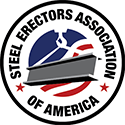 No matter how low or high you are off the ground, a tumble from a ladder can have serious consequences. The National Institute for Occupational Safety & Health (NIOSH) reports that more than 500,000 people in the United States are treated for ladder injuries every year. What’s more, about 300 fatalities occur each year from ladder-related injuries. Ladder safety is something that should be taken seriously. OSHA Standard 1910.23(b)(9) states that the employer must ensure that ladders are inspected before initial use each work shift, and more frequently as necessary, to identify any visible defects that could cause employee injury. Not to be taken for granted, if ladders are used regularly by employees, it’s a good idea to include ladder safety in daily safety meetings. And even if your workers only use them occasionally, then at least an annual safety meeting on ladder safety is a must. Best Practices
True or False: An employer is not required to have a training program for each employee using ladders? FALSE – Per OSHA 1926.1060(a), the employer shall provide a training program for each employee using ladders and stairways, as necessary. The program shall enable each employee to recognize hazards related to ladders and stairways, and shall train each employee in the procedures to be followed to minimize these hazards. Ladder safety training is often overlooked. Why? It’s simple. Anyone can climb a ladder. Right? Remember when you climb a ladder you are placing yourself at height. Height is a hazard and a hazard should be controlled or eliminated. References: OSHA Standard 1910.23(b)(9) American Ladder Institute National Ladder Safety Month Ladders: From Research to Smart, Safe Practices This Safety Flash was contributed by Kevin Muldoon, Project Manager at Mazzella/FHS Engineered Lifelines & Fall Protection, in cooperation with SEAA’s Safety Committee. It is designed to keep members informed about ongoing safety issues and to provide suggestions for reducing risk. Best practices are gathered from a variety of sources. They may be more or less stringent than individual corporate policies and are not intended to be an official recommendation from SEAA. Always get approval and direction from your company officers on any new practice or procedure as these best practices may not work for all situations. Everyone benefits when a worker avoids injury. Submit your ideas for Safety Flash to [email protected] Comments are closed.
|


 RSS Feed
RSS Feed
